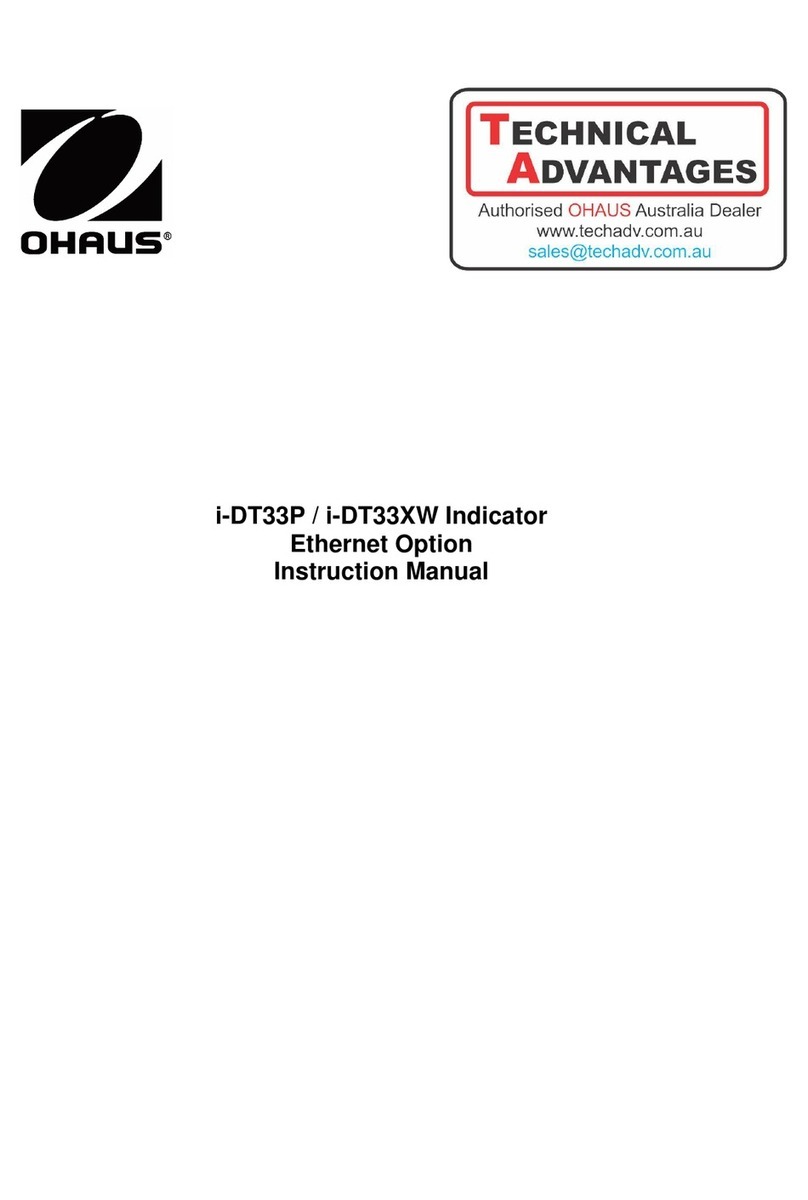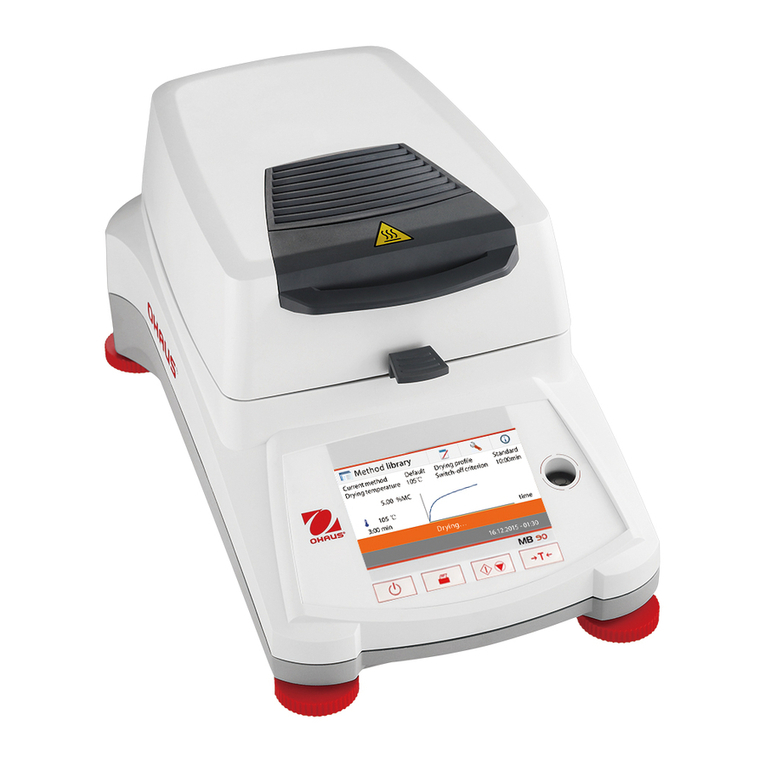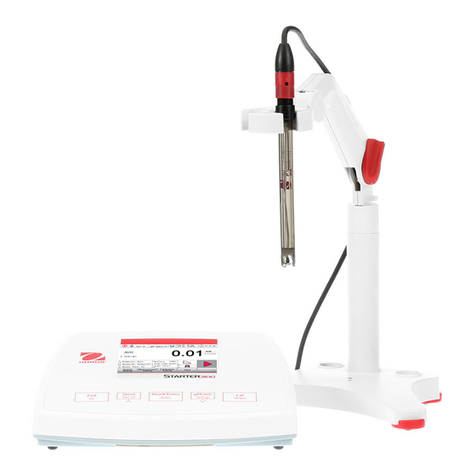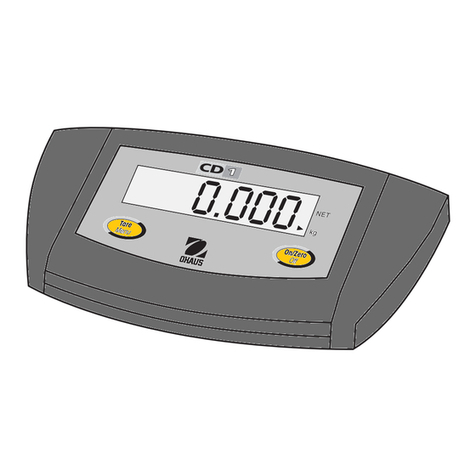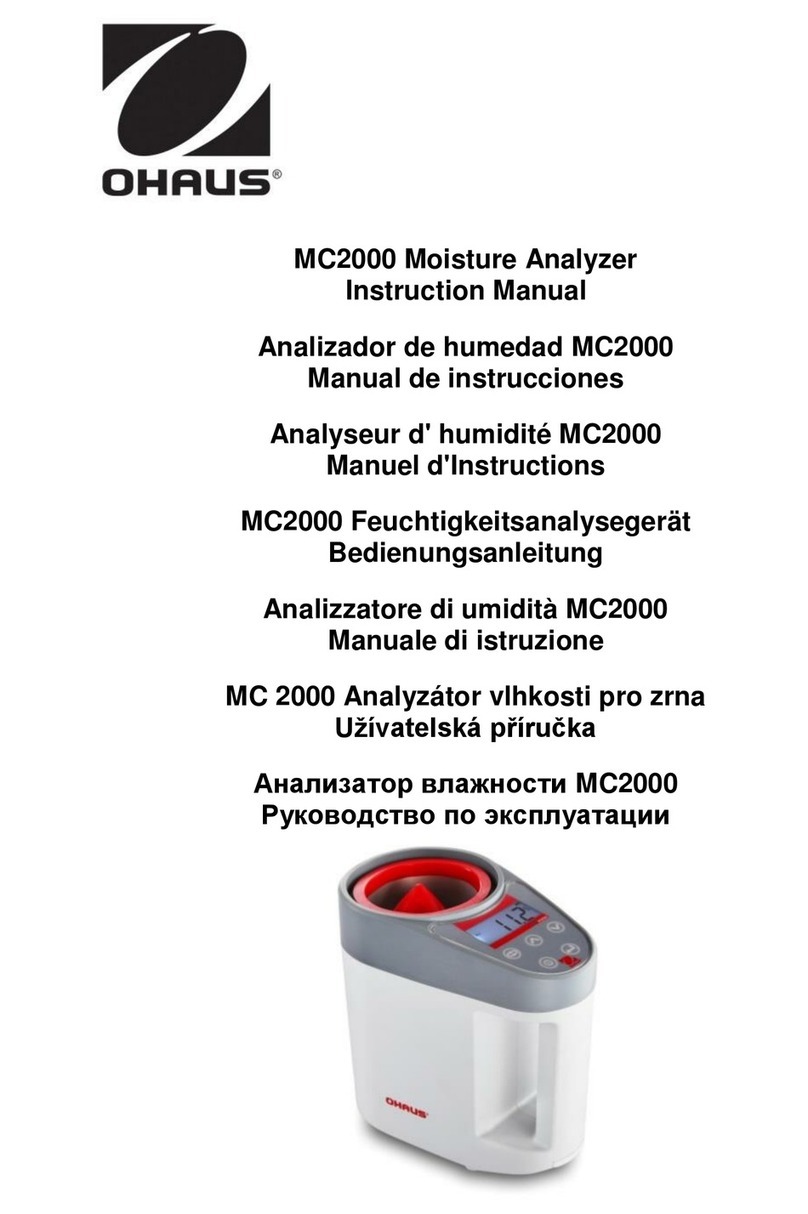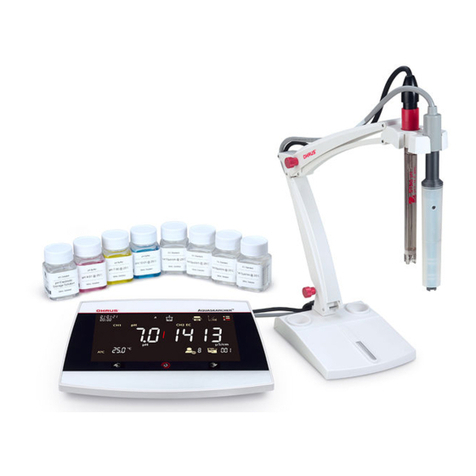
STARTER 300C Portable Conductivity Meter EN-1
TABLE OF CONTENTS
1INTRODUCTION...................................................................1
1.1 Definition of Signal Warnings and Symbols ...................................... 1
1.2 Safety Precautions............................................................................ 2
1.3 Display and controls.......................................................................... 2
2INSTALLATION.....................................................................4
2.1 Package contents.............................................................................. 4
2.2 Installing the batteries ....................................................................... 5
2.3 Installing the electrode clip................................................................ 5
2.4 Installing the IP54 cover.................................................................... 5
2.5 Integrated stand for table top use ..................................................... 6
3SETUP...................................................................................6
3.1 Set temperature unit.......................................................................... 6
3.2 Set MTC temperature value.............................................................. 6
3.3 Set calibration standard .................................................................... 7
3.4 Set temperature correction coefficient .............................................. 7
3.5 Set TDS factor................................................................................... 7
4STARTER 300C OPERATION ..............................................8
4.1 Calibration ......................................................................................... 8
4.1.1 Selecting a standard................................................................... 8
4.1.2 Performing a calibration ............................................................. 8
4.2 Sample measurement....................................................................... 9
4.3 TDS measurement............................................................................ 9
4.4 Using the memory........................................................................... 13
4.4.1 Storing a reading...................................................................... 13
4.4.2 Recalling from memory ............................................................ 13
4.4.3 Clearing the memory................................................................ 13
5MAINTENANCE..................................................................14
5.1 Error message..................................................................................11
5.2 Meter maintenance...........................................................................11
5.3 Self diagnosis...................................................................................11
5.4 Recover factory settings...................................................................11
6TECHNICAL DATA.............................................................15
6.1 Specifications................................................................................ 15
6.2 Compliance ..................................................................................... 16
7APPENDIX ..........................................................................14
7.1 Conductivity standards.................................................................... 14
7.2 Examples of temperature coefficients (α-value).............................. 17
7.3 Conductivity to TDS conversion factors.......................................... 17
www.calcert.com sales@calcert.com1.888.610.7664 0
5
10
15
20
25
30



